Experiment down
The smoke is thick in Fairbanks. Air the characteristic dirty orange of a nearby wildfire. Michelle Mack, lead PI of the Bonanza Creek LTER and long-time fire ecologist, saunters out of her lab. “It’s gone,” she says.
Overnight, the nearby McDonald Fire burned one of her experiments down. The experiment explored an innovative approach to preventing wildfires. Now it was charcoal.
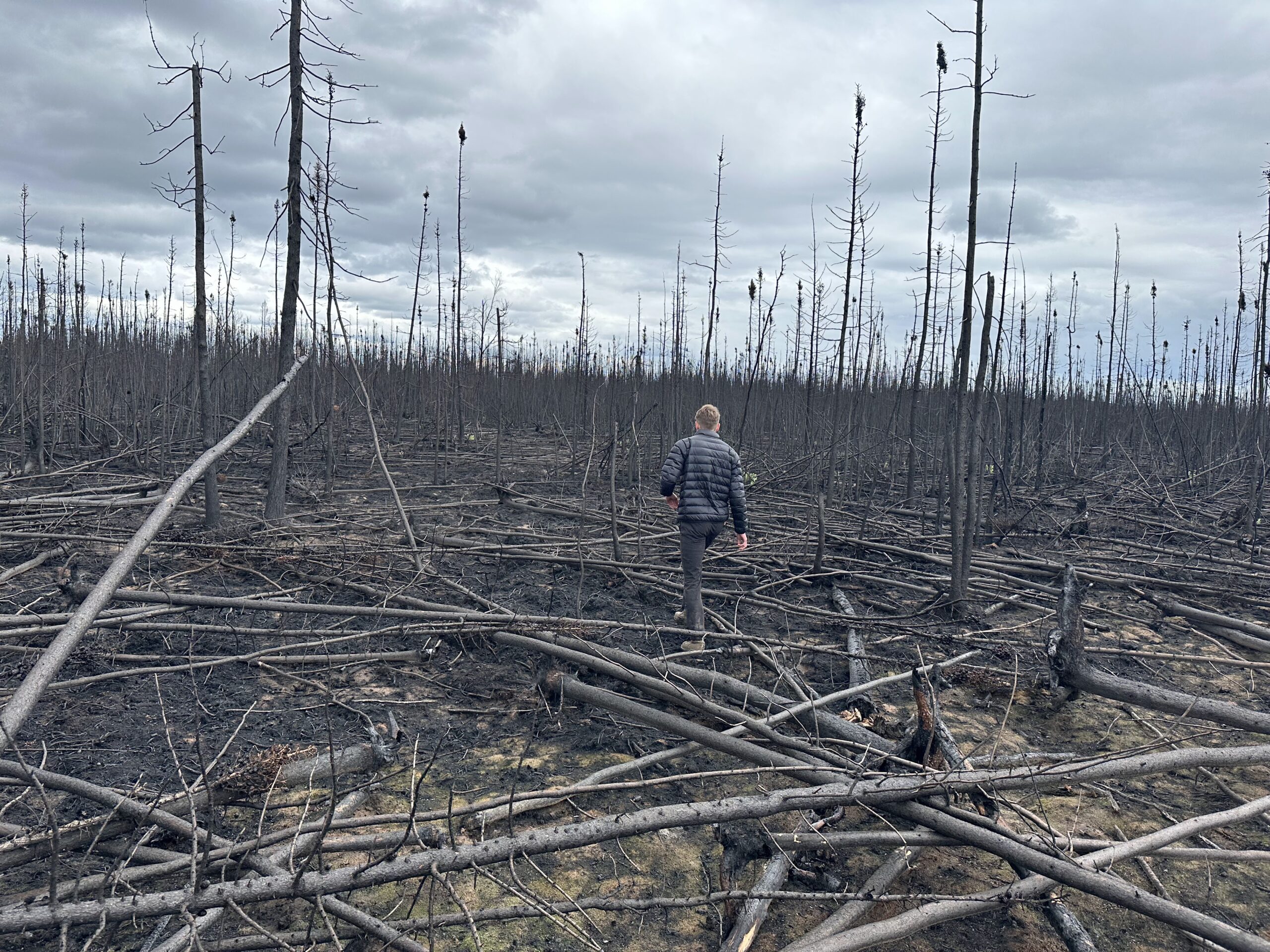
Credit: Credit: Nick Link, CC BY-SA 4.0.
Up here, fire is no surprise. The boreal forest is primed to burn. Black spruce, the dominant tree species in the forest, relies on fire to reproduce. The tree’s physiology is loaded with adaptations that promote burning: needles and branches full of flammable resin, branches low to the ground that allow fire to quickly burn into the tree’s crown, forest stands packed dense so that fire jumps from tree to tree. Still, watching a whole experiment go up in flames is hard to stomach.
I’ve been visiting the Bonanza Creek LTER for the past week. I came into this trip well aware of the tendency of black spruce to burst into flames—much of what I had heard about the site revolved around fire ecology. I was hoping to dig a bit deeper into some other aspects of the site for this trip—hunting to focus on anything other than fire. Yet Bonanza Creek was quick to remind me of its true nature: everything about its ecology follows the flame.
Break in the trees
For decades, the Bonanza Creek LTER has studied how fire shapes the boreal forest. In recent years, a growing Alaskan population and an increasingly fire prone boreal forest have pushed the site to expand their research into fire management and prevention.
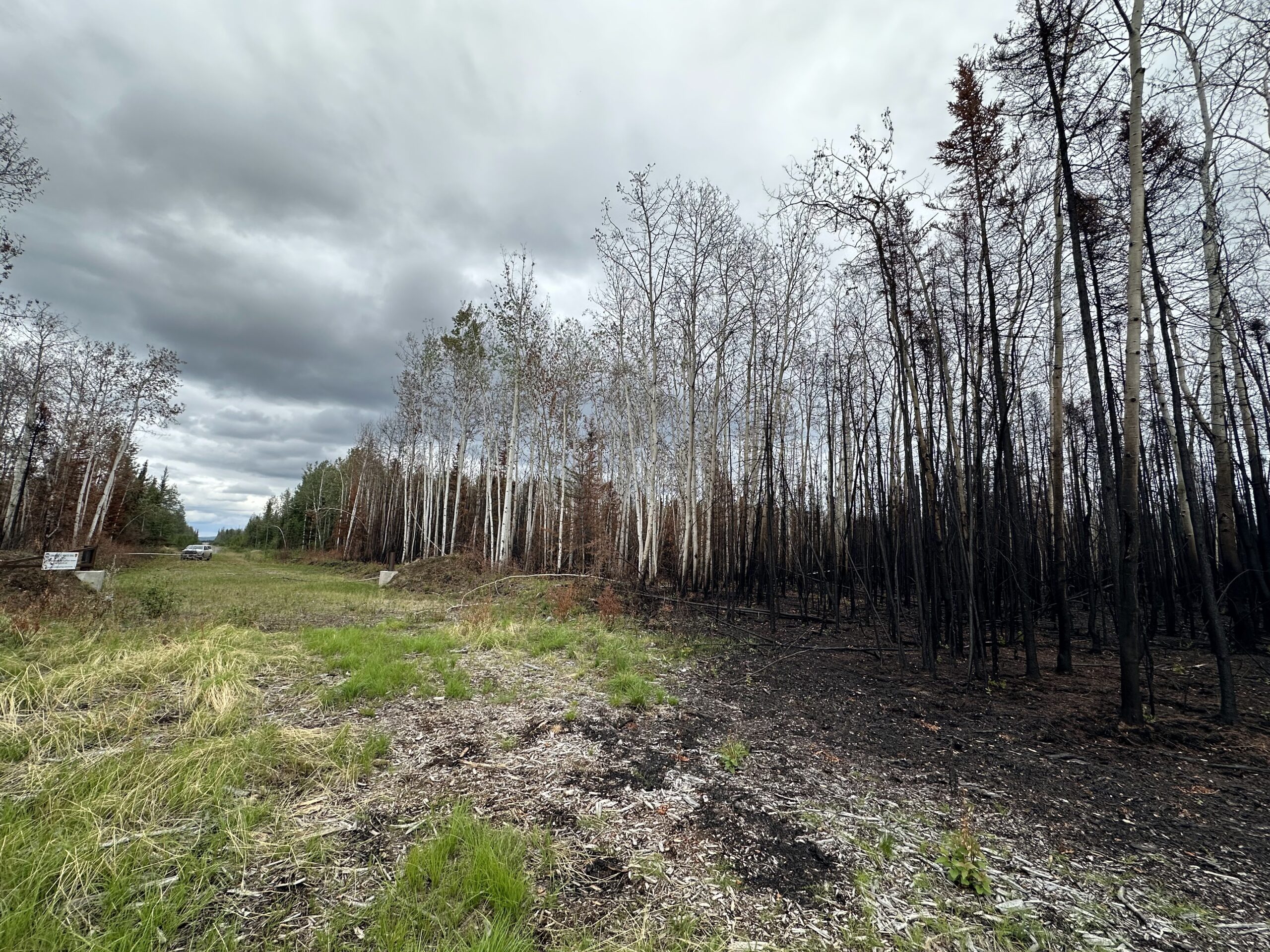
Credit: Nick Link, CC BY-SA 4.0.
Michelle’s burned experiment was part of a broad initiative to reimagine fuel breaks, a common fire prevention strategy, in boreal forests. Fuel breaks are miles long strips of clear-cut boreal forest, often placed around towns or infrastructure. These barren runways allow quick access to firefighters, who can back-burn the forest towards an oncoming fire, starving it of fuel. They’re startlingly effective. But pure clear cuts also carry negative consequences for the ecosystem.
Michelle and her graduate student, Nick Link, think that these fuel breaks can be implemented better. Their research focuses on interventions that use the space cleared in the forest to provide local communities some sort of benefit. The interventions range from planting the fuel breaks with birch and aspen, which are far less flammable than spruce, to building farms or community spaces in those areas. The work is part of a broader initiative to reimagine fuelbreaks, incorporating community needs and prioritizing co-benefits in their design, and is the centerpiece of an NCEAS Morpho Working Group funded in 2023.
In the summer of 2023, one year prior, Nick set up an experiment designed to study the effects of several different fuel break treatments on boreal forests. On strips of forest near Fairbanks, he and his team cleared trees and the thick layer of soil and detritus below them. It was a ton of work, but the experiment was designed to run for a decade or so, enough time to let the deciduous trees grow to maturity. Then, they’d compare the effects of the fuel break on the ecology of the system—from carbon and nutrient cycling to species interactions and more.
“We had one year of data, then the experiment was scorched within a week,” Nick laments.
An expanded field station
Nick’s burned experiment is a role reversal of sorts at the Bonanza Creek LTER. Often, fires strike parts of the boreal forest far from Fairbanks; researchers titillated by a new blaze flock to fresh burn scars, eager to learn about how the forest responds. In response, the site has grown to incorporate research plots hundreds of miles from the Bonanza Creek LTER to study fire ecology.
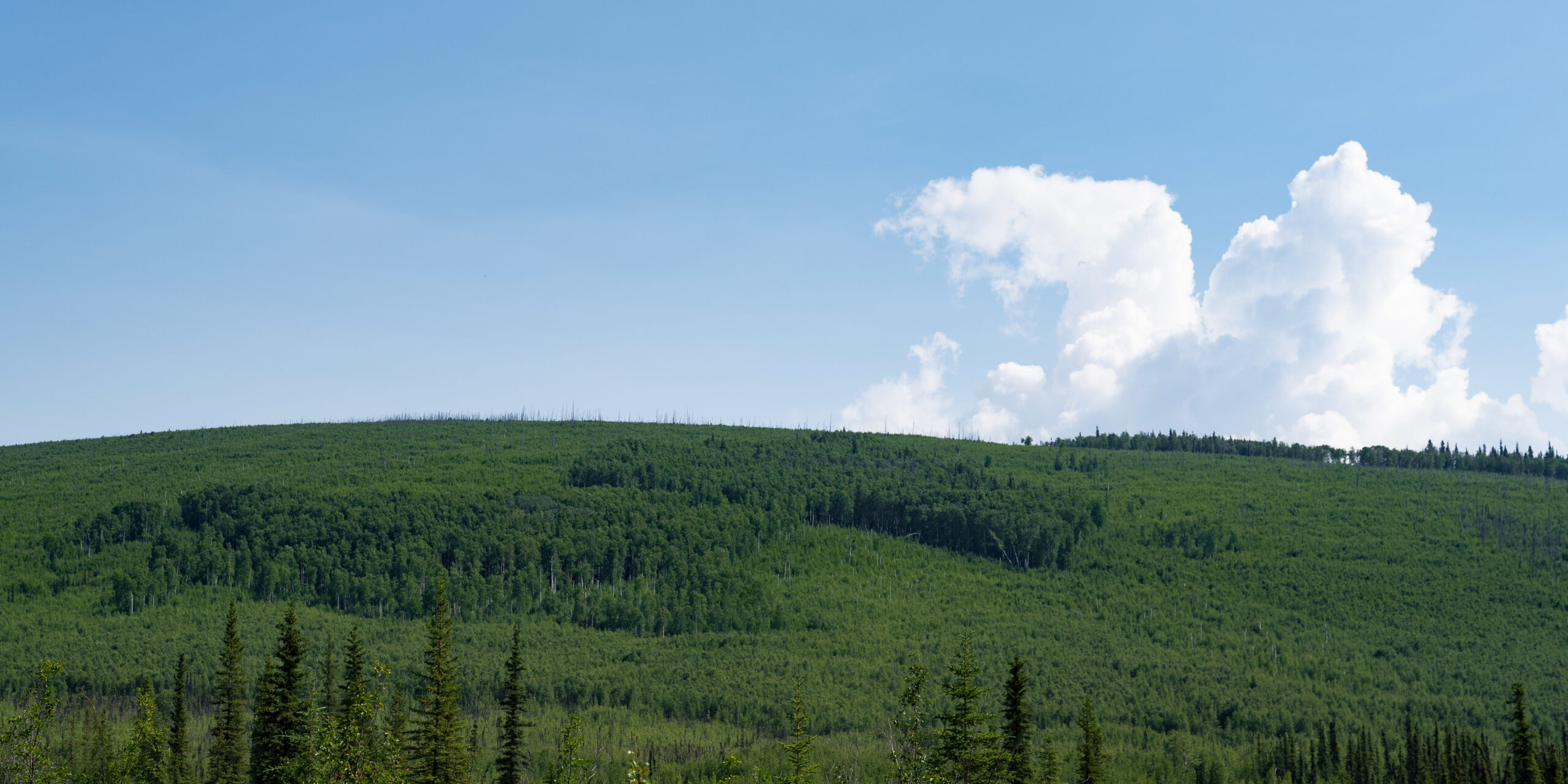
Credit: Gabriel De La Rosa, CC BY-SA 4.0.
This broad network of plots has revealed some unsettling truths about the trajectory of the boreal forest. Fires used to burn through the black spruce at a frequency and intensity that promoted germination of black spruce saplings—prompting replacement of the burned stands with the same black spruce forest that grew before. Now, however, fires are burning more frequently and hotter, destroying black spruce seeds in the process and allowing other species, namely poplar and aspen, to migrate in.
The consequences for the ecosystem and Alaska as a whole are complex. For one, these deciduous trees are far more resistant to fire than the spruce they replace. That dynamic underpins Nick’s whole experiment: he wants to know if growing deciduous trees in the fuel breaks create a low-maintenance alternative to clear cuts, which would otherwise need to be re-cleared every few years. In an ironic proof-of-concept, the McDonald Fire refused to burn a stand of poplar just a few hundred yards from his torched experiment, the trees still powdery green and unscathed.
These deciduous stands also store up to five times more carbon than their spruce counterparts.
That increased storage might mitigate some of the carbon released from fires, including both carbon in the trees and soil but also the permafrost below, which is more likely to thaw after a fire. This dynamic highlights the complex fate of carbon in the boreal forest. One of the main foci of the LTER site is to sort out the consequences of this dynamic change on the global carbon cycle.
Key data across the globe
Of course, Bonanza Creek’s research extends far beyond fire ecology.
One day, I tag along to deploy dendrometers, sensors that measure fine scale tree growth, on trees in several different forest plots along the Tanana River (these are the same sensors immortalized in this great New Yorker piece). The global project, spearheaded by Arctic LTER lead-PI Kevin Griffin and his former PhD student Jeremy Hise, is an effort to compare how trees function and grow in sites across the globe; after our visit, twenty or so trees from Bonanza Creek now contribute data to the project.

Credit: Gabriel De La Rosa, CC BY-SA 4.0.
These sites are part of a long effort at Bonanza Creek to study forest succession after flooding from the nearby Tanana River. The river, a braided, silted behemoth, changes course every once in a while, leveling the trees into silt. Another change of direction and the forest begins to recover. The river leaves a mosaic of forest types in its wake, each patch at a different stage of recovery.
Over decades, the LTER sorted out the trajectory a forest takes after this flooding. First, shrubs establish on the fresh silt. Then, deciduous trees, poplar and alder, rise above the shrubs. White spruce comes next, growing tall and airy forests. Eventually, black spruce, that fire prone species that characterizes the boreal, takes over, persistent until the next flood. Over time, the forest floor grows thicker, then, after decades, the lowest layers freeze, turning into permafrost, locking away organic material in ice. The succession is remarkably predictable, and each stage of forest differs in its capacity to do things like store carbon, cycle nutrients, or support different floral and faunal communities.
Change is in the water
Carbon in the streams at the Caribou-Poker Creek Watershed, just miles away from the Bonanza Creek Experimental Forest, is sometimes tens of thousands of years old, graduate student Abbey Raison tells me, as her lab tech Cedar Schmitz-Guy shouts out flow readings from waist deep in Poker Creek. They’re busy this summer tracking the amount and character of carbon that flows through these creeks. In recent years, carbon in the creeks has shifted older; the trend follows an increase in thawing permafrost, supplying creeks with organic material that had previously been locked away for millenia.
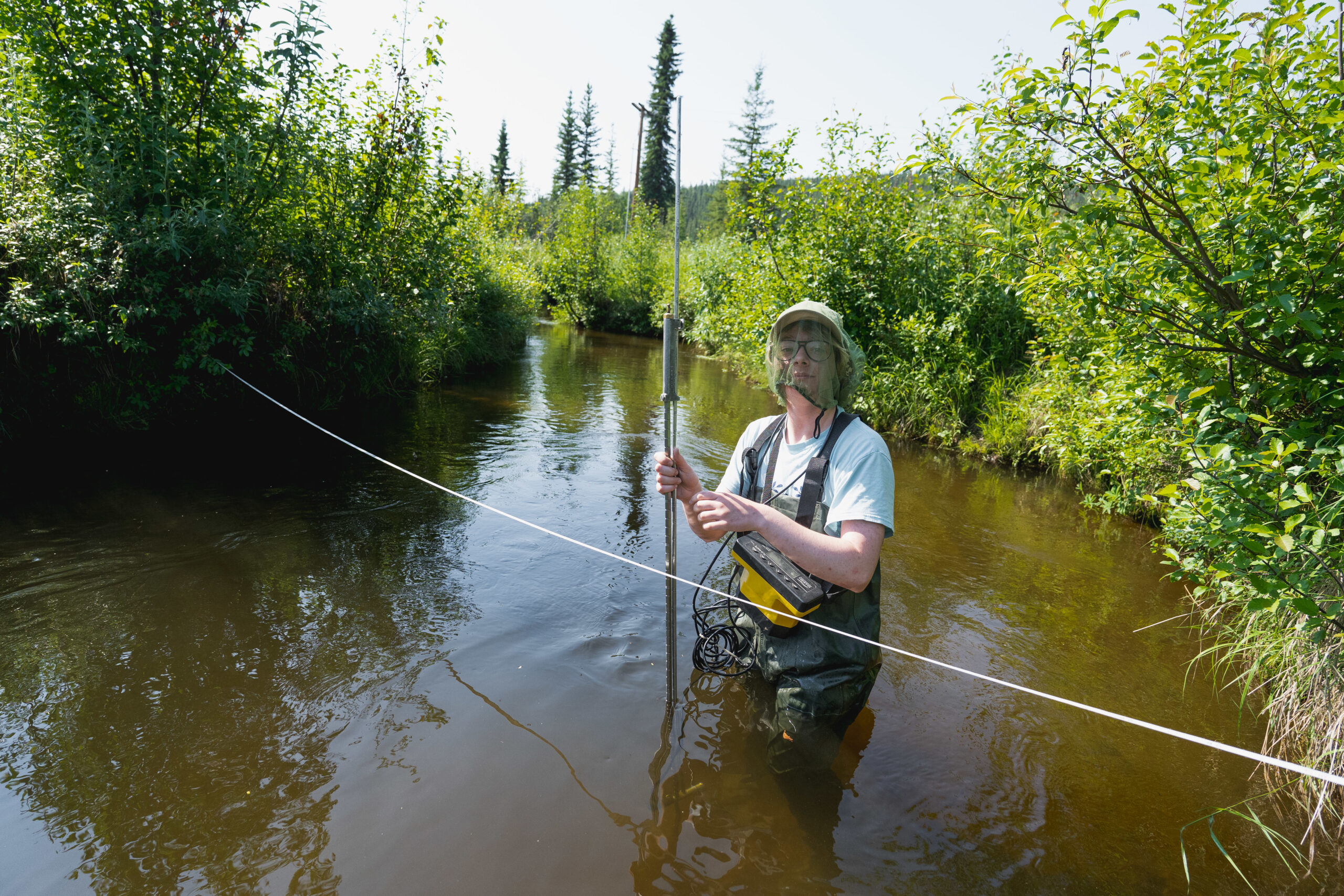
Credit: Gabriel De La Rosa, CC BY-SA 4.0.
Patterns of fire on the landscape alter the flow of carbon into these streams, Abbey tells me: hotter fires that burn through the thick layer of moss, roots, and needles at the base of spruce forest lead to thawing permafrost. That organic material, spongy underfoot, is excellent insulation for the frozen soil; without it, warm summer temperatures thaw the frozen layer beneath.
Permafrost cores help link the carbon signature Abbey and Cedar measure in streams to its source on land. They also help researchers track differences in permafrost across the landscape. Researchers of Bonanza Creek have taken thousands of cores across Alaska, and there are plans to take thousands more.
Burn scar
Still, during my visit to each of these sites, the fingerprints of fire were ever present.

Credit: Gabriel De La Rosa, CC BY-SA 4.0.
Permafrost cores at the Bonanza Creek LTER. The dark soil is the organic layer, which thaws each year. Below that is mineral soil, permanently frozen, though threatened by climate change. Credit: Gabriel De La Rosa, CC BY-SA 4.0.
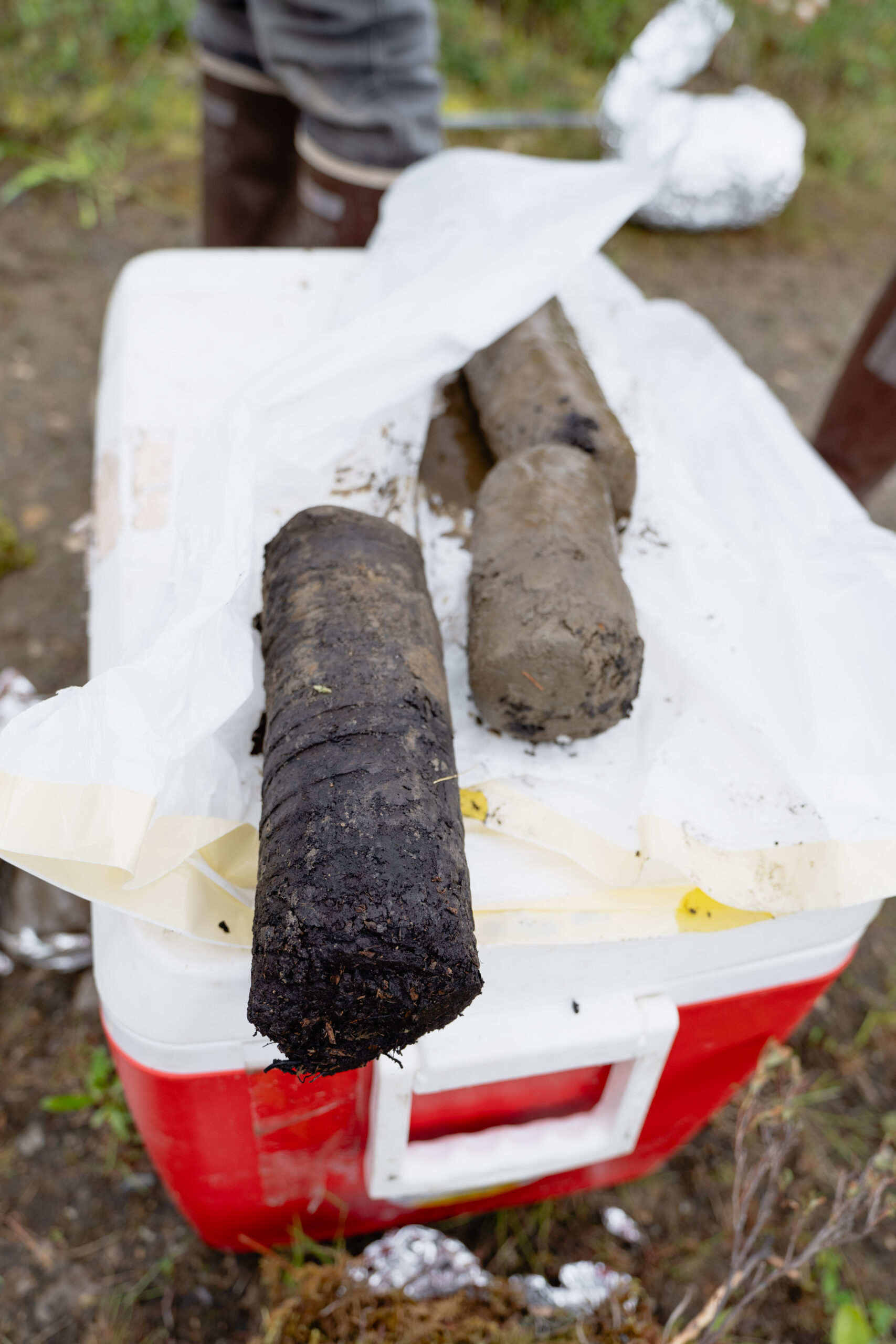
Credit: Gabriel De La Rosa, CC BY-SA 4.0.
It’s an interesting dichotomy, part of the reality of living in a fire prone system. Researchers and communities adapt in the face of fire, though neither can predict exactly when a burn will happen. Nick and Michelle plan to restructure their experiment to prioritize other unburned sites.
But one can’t survive in Alaska with a constant fear of fire, either: work, in the case of research, or life, for a resident, must go on.
And yet, being proactive has its rewards. Fuel breaks are proactive management, preparing for fire far in advance of a blaze. The expansive research of the Bonanza Creek LTER is similarly proactive, opting to expand over a wide geographic range to understand fire now, rather than waiting for a convenient blaze.
As my flight rises out of Fairbanks, the altitude reveals a landscape speckled with spruce, Alaska-big rivers, and great gray plumes of smoke. It’s true, I think. Up here, one can never leave fire far behind.
By Gabriel De La Rosa










